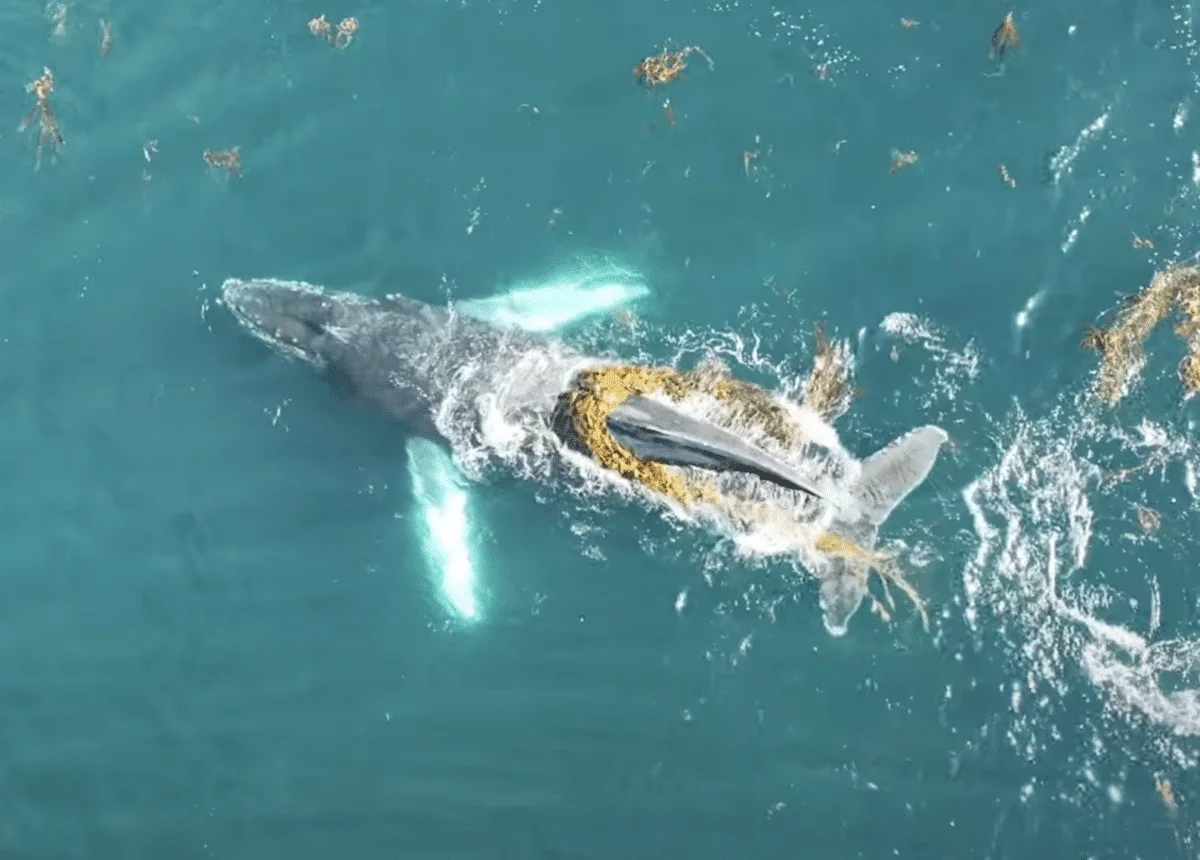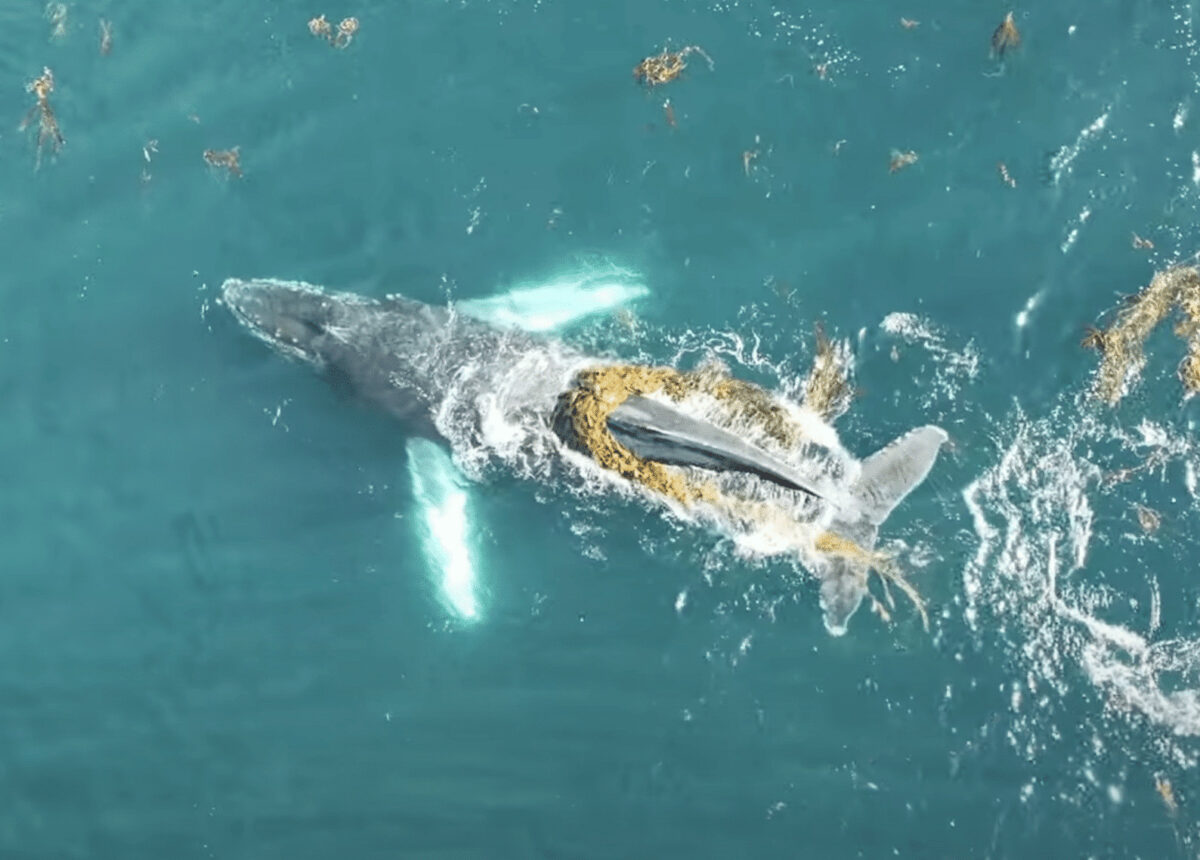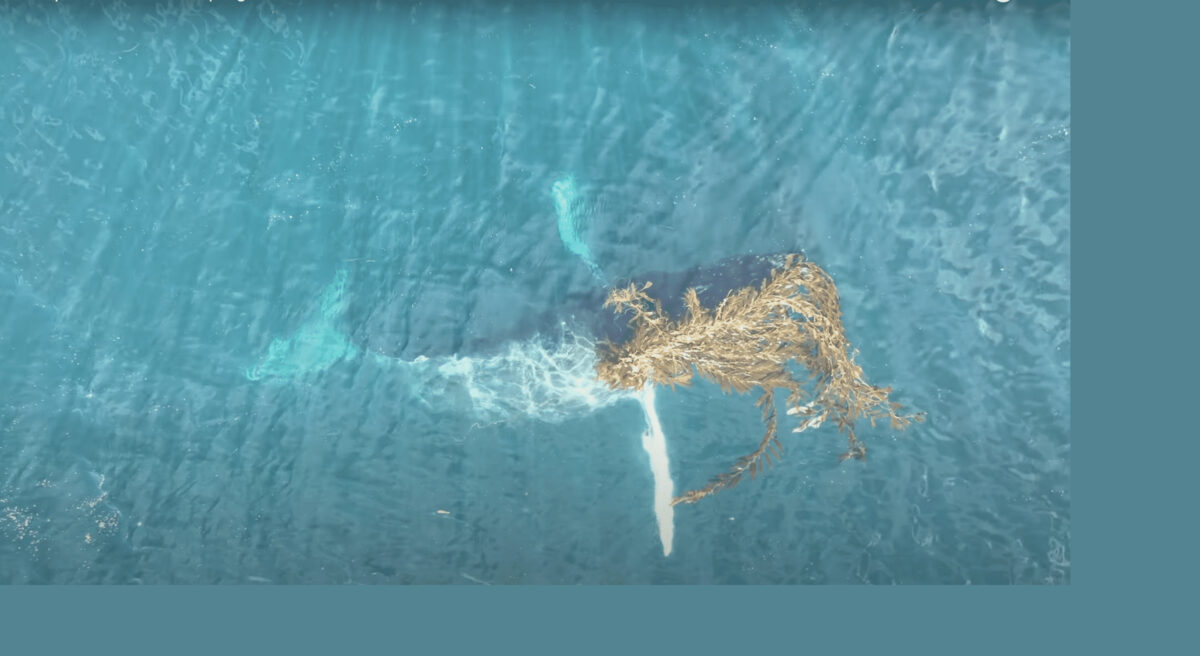Picture yourself out at sea, gazing at the boundless expanse of ocean when suddenly, an enormous creature emerges from the depths, adorned with an unexpected accessory – a hat made of seaweed! Scientists have recently uncovered a few reasons as to why whales have been observed wearing kelp hats.
This enchanting phenomenon has captivated the attention of marine enthusiasts and scientists alike. Whales, the giants of the deep, have been observed engaging in interesting behavior: adorning themselves with seaweed as hats or using it as an exfoliant. In this article, we will delve into this captivating behavior, shedding light on the reasons behind it, and uncovering the mysteries of these underwater fashionistas.
Whale Couture: The Purpose Behind Whales Donning Kelp Hats
The first question that springs to mind when you hear about whales wearing seaweed hats is, “Why do they do it?. It turns out there’s more to it than just an unusual fashion statement. Experts have delved deeper into this phenomenon to discern the practical reasons driving it.
1. Kelp Play: Healthy and happy whales don’t mind pausing on feeding to indulge in some good old fun. Kelp play may have long-term benefits such as improving coordination and movement skills. Balancing the kelp on their flat upper head may also be ticklish as the seaweed brushes against fine hairs along the top of their heads.
2. Soothing Scratches: We all appreciate the gratification of scratching an itch. Whales, incapable of using their fins for this purpose, might turn to seaweed for a good scratch. The coarse texture of kelp can provide the perfect exfoliation and alleviate any discomfort caused by baby barnacles and whale lice.
3. Seaweed Scrub: Many of us enjoy going to a spa and indulging in a seaweed wrap, why not the same for whales? Some seaweed species are known to combat bacterial growth, which whale skin suffers quite a bit from. Whales generally have to shed their skin to prevent virus and bacteria overgrowth on their skin.
Kelping Behavior: More Prevalent Than Previously Believed
Until recently, the phenomenon of whales donning seaweed hats was shrouded in mystery and appeared to be a rare event, only occurring in a few places. However, thanks to advances in marine research, we now know that this behavior is a global phenomenon, and more common than previously thought.
Researchers have documented over 100 instances of whales engaging in kelping behavior. Humpback, gray, southern and northern right whales have all been spotted adorning themselves with kelp. The observations range from a single strand of seaweed adorning a whale’s head to more elaborate displays with entire seaweed wrapped around their bodies.
The Playful Side of Whales: A Peek into Their Intelligence
The act of donning seaweed hats or using it as an exfoliant not only highlights whales’ adaptability but also offers insights into their intelligence. Whales are renowned for their intricate social structures and advanced cognitive abilities, and kelping behavior adds another layer to their enigmatic personalities.
1. Seaweed as a Tool: Whales employing seaweed as a tool to scratch an itch showcases an aspect of tool use that was not widely recognized before. Dolphins and turtles have also been observed using their environment to help scratch itches. This behaviour underscores their ability to improvise and adapt to their environment.
2. Social Learning: The newly discovered prevalence of kelping behavior among whales suggests a certain degree of social learning. It’s possible that whales are passing down this knowledge from one generation to the next, implying a cultural aspect to their behavior.
3. Playfulness: Whales are celebrated for their playful nature, often seen breaching, tail-slapping, and spy-hopping. Kelping behavior adds to their playful repertoire, demonstrating that they can have fun while also accomplishing practical tasks.
Watch Video: Whales Wearing Kelp Hats
Conservation Implications: Safeguarding Whales and Their Kelp Accessories
Comprehending the behavior of whales, including their penchant for seaweed, can have significant implications for their conservation.
1. Environmental Impact: The presence of abundant seaweed is crucial for whales to continue their kelping behavior. As climate change and pollution threaten marine ecosystems, preserving kelp forests becomes imperative not only for whales but for the entire oceanic ecosystem.
2. Tourism and Education: Whales have long been a draw for eco-tourism. Highlighting their unique behavior, such as wearing seaweed hats, can establish a deeper connection between people and these magnificent creatures, fostering a sense of responsibility towards their protection.
3. Research Opportunities: The study of kelping behavior offers researchers valuable insights into whale behavior, intelligence, and social structures. This knowledge can assist in developing more effective conservation strategies.
In conclusion, this newfound kelping behavior shows us that we still have much to learn about these giants of the sea. As we delve deeper into their world, let us also remember the importance of preserving their habitats and ensuring these gentle giants have access to their seaweed boutiques for generations.
What do you think about whales and their kelp hats? Leave a comment below.
Thank you for following along with this article – Why Whales Wear Kelp Hats? Scientists Have Uncovered The Truth Behind This Bizarre Behaviour.
You may also like:
- The Trend of Orcas Wearing Salmon Hats In the 80s
- Kayaker’s Enchanting Encounter With Whales
- Where to see Gray Whales
Join our Forum for free today!

- Shocking Survey Results of only 718 Snow Leopards Identified in India - July 18, 2024
- Do Octopuses Punch Fish For No Reason? - July 5, 2024
- Brave Farm Animals Save Chicken Friend FromHawk - June 30, 2024




